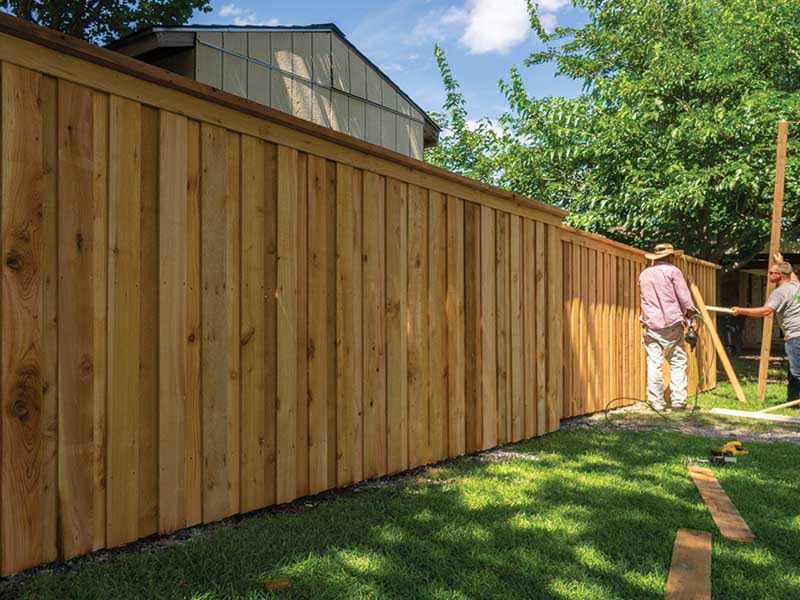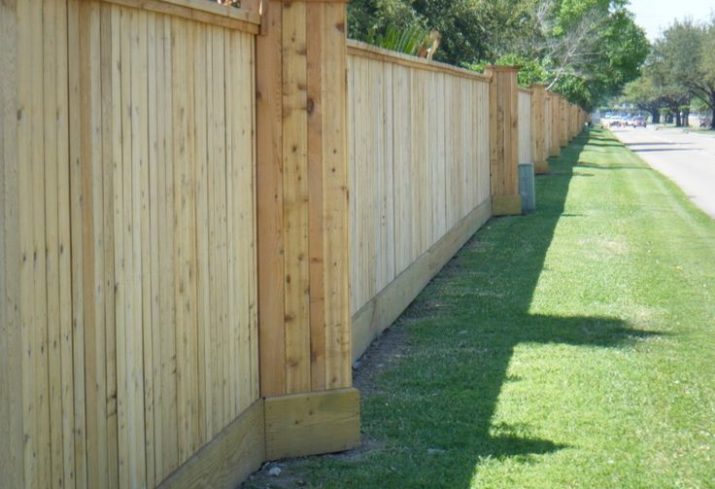Reasons You Need Quick Fence Repair Before Damage Gets Worse
Reasons You Need Quick Fence Repair Before Damage Gets Worse
Blog Article
How to Determine Common Issues That Need Immediate Fencing Repair Service
When it involves preserving your fence, it is critical to spot problems prior to they come to be bigger issues. On a regular basis looking for signs of decomposing wood, leaning panels, or corrosion can save you money and time over time. You could not realize how weather condition and insects can jeopardize your fencing's integrity. Let's explore the usual indications that show your fence requires prompt focus, so you can maintain your residential property safe and secure and looking its best.
Indications of Rotting Wood in Wooden Fences
Have you observed your wooden fence looking a bit worse for wear? If so, it may be time to look for indications of decomposing wood. First, examine the base of the articles and panels for soft places. That's a clear indicator of rot if you push on the timber and it really feels mushy or crumbles. Next, seek discoloration or dark places on the wood-- these frequently signal moisture damages. Take notice of any type of peeling paint or finish, as this can reveal the wood to further decay. Additionally, a poignant, mildewy odor can show fungal development. Don't forget to inspect connections and joints; if they're loose or falling apart, the timber under is most likely jeopardized. By catching these indications early, you can protect against a lot more substantial damages and maintain your fencing standing strong. Regular maintenance is crucial to extending the life of your wood fencing.
Leaning or Tilting Fencing Panels
If you've noticed your fencing panels tilting or leaning, it's critical to recognize what caused it. This concern could show underlying architectural damages that requires your interest. Let's discover the common reasons and the repair service alternatives offered to get your fencing back fit.

Sources Of Leaning Panels
It's frequently an indicator of underlying issues that require addressing when you see your fencing panels tilting or leaning. One common reason is inadequate drain; extreme water can erode the dirt around the fence articles, deteriorating their assistance. Another culprit could be strong winds or tornados that press against the panels, particularly if they're not appropriately secured. Additionally, the natural settling of dirt in time can cause posts to move, leading to a tilt. Pests, like termites, can compromise the stability of wood panels, creating them to lean. Bad installment techniques may result in panels not being securely established, leaving them vulnerable to leaning under pressure. Address these concerns without delay to keep your fence's stability.
Indicators of Architectural Damages
Discovering turning or leaning fencing panels can be disconcerting, as these concerns often suggest architectural damage that needs prompt interest. When your fencing begins to lean, it may indicate that the articles are shifting or that the dirt around them has eroded. Pay very close attention to gaps between articles or panels, as these can also suggest instability. deck builder. In addition, check for cracks or splintering in the wood, which can weaken the overall structure. If you observe rust or rust on metal components, it can endanger the integrity of the fencing. Bear in mind, neglecting these indications can bring about much more extreme damage down the line, so it's crucial to evaluate the scenario immediately and take activity prior to it gets worse
Repair Service Options Available

Rust and Deterioration in Metal Fences
If you have a steel fencing, you could discover corrosion and corrosion sneaking in with time, particularly if it's subjected to wetness. These concerns not just affect the appearance of your fence but can likewise jeopardize its architectural integrity. To recognize corrosion, seek reddish-brown areas or patches, which show the metal is oxidizing. Deterioration can spread promptly if left unattended, leading and compromising the fence to expensive repairs.To take on corrosion and rust, you must clean up the influenced areas with a cable brush and use a rust-inhibiting guide. As soon as the guide dries out, think about repainting the fencing with a weather-resistant paint to secure it better. Normal upkeep, such as examining for signs of rust and touching up paint as needed, will certainly help expand your fencing's life expectancy. Attending to these concerns promptly ensures your steel fencing continues to be strong and aesthetically appealing for many years ahead.
Cracks and Divides in Plastic Fencing

Root Causes Of Plastic Damage
Vinyl fencing is prominent for its resilience, yet it can still struggle with fractures and splits due to numerous variables. One significant cause is severe temperature variations. When plastic increases in the heat and contracts in the cool, it can compromise the material in time. Additionally, exposure to harsh sunlight can bring about UV deterioration, making the vinyl breakable. Physical effects, like unexpected crashes or heavy branches, can additionally create fractures. Poor setup or using low-quality materials can intensify these issues. In addition, age plays a role; older vinyl fencing is extra vulnerable to damages. Normal inspections can aid you identify these variables prior to they result in significant issues. Take aggressive steps to assure your fence stays solid and undamaged.
Fixing Cracks Efficiently
Although fractures and divides in your vinyl secure fencing can be concerning, addressing them promptly can prevent additional damages and keep the fence's look. Evaluate the dimension of the crack. For little cracks, a plastic fixing set typically consists of sticky that can bond the sides, providing a seamless solution. Clean the find more area completely prior to applying the adhesive, ensuring it adheres appropriately. For larger divides, you may require to use a plastic spot. Cut the patch to dimension, apply glue around the edges, and press it securely onto the split. Enable it to treat as per the maker's instructions. Regular maintenance and fast repairs can prolong your fencing's lifespan, keeping it looking fantastic for several years to find.
Loose or Missing Out On Fencing Messages
Loose or absent fence articles can undermine the stability of your entire fencing structure. It's essential to deal with the problem immediately if you see any type of posts leaning or wobbling. Look for any indications of movement, as this can lead to additional damage in time. You can quickly assess the trouble by offering each blog post a mild shake-- if it really feels unsteady, it's time to take action.For missing articles, you'll need to change them asap to maintain your fencing's stability. Make sure they're firmly anchored in the ground with concrete or gravel for added stability when you set up new messages. If a post hangs, tighten it by adding additional support or driving it deeper into the ground.Ignoring these problems can bring about bigger troubles, like gaps in your fence or perhaps total collapse. So, keep an eye on your posts and stay aggressive concerning repair work!
Damage From Weather Condition and Natural Environment
Climate and natural elements can ruin your fencing, causing numerous forms of damage that need punctual interest. Hefty rain can cause timber to rot, making it unstable and weak. Snow accumulation could bend or damage panels, while strong winds can uproot fence articles or create sections to lean.If you see cracks or splintering in wood fencings, it signifies drying out because of extreme sunlight exposure. Metal fencings can corrosion if safety coverings put on off, especially in moist or seaside areas.Inspect your fence routinely after storms or severe climate to catch any damage early. Attending to these issues promptly can conserve you from pricey repair work down the line. Don't wait up until a tiny problem turns right into a significant one; remain positive and maintain your fencing in leading form to preserve both capability and aesthetic allure.
Bug Problem and Termite Damage
It's necessary to act quickly to stop additional destruction when you observe signs of insect infestation or termite damage. Look for mud tubes along your fencing or hollow-sounding timber, as these indicate termites go to work. You might additionally see little openings or frass, which is termite droppings resembling sawdust. If you detect any of these signs, it's time to evaluate the damage.Don' t delay up until it's too late; bugs can jeopardize your fencing's stability. Evaluate the surrounding area for ants or beetles, as they might be adding to the issue. If you presume an infestation, consider calling a pest control expert to verify and treat the issue.Repairing or replacing damaged areas of your fencing quickly not just recovers its toughness however also stops bugs from spreading better. Keep attentive to keep your property protected and pest-free.
Often Asked Concerns
Just how Typically Should I Inspect My Fence for Damage?
You should check your fence at the very least two times a year, preferably during spring and autumn. Regular checks help you detect damages early, saving you time and money on fixings while keeping your property's look and protection.
Can I Fix a Fencing Myself or Employ an Expert?
You can absolutely fix a fencing yourself if you have the right devices and skills. Employing an expert assurances quality job and conserves you time, particularly for intricate repairs or considerable damages.
What Equipment Are Needed for Fundamental Fence Repairs?
For fundamental click here for more fencing fixings, you'll require devices like a hammer, screwdriver, pliers, a saw, a degree, and measuring tape. deck builder. Depending on the repair service, you This Site could also require nails, screws, or substitute boards
Exactly How Much Does Fencing Repair Work Typically Expense?
Fence repair work expenses differ widely, however you can anticipate to pay in between $200 and $1,500 depending on materials, labor, and degree of damages. It's clever to obtain numerous quotes for the ideal bargain.
When Is the Best Season for Fence Repair Works?
The most effective time for fencing repair work is throughout light weather, usually in springtime or early loss. You'll stay clear of severe temperatures, making it much easier to work and making sure the products set appropriately for lasting sturdiness (deck builder). Observing leaning or turning fence panels can be disconcerting, as these issues frequently show structural damage that requires instant focus. Loose or absent fence blog posts can threaten the stability of your whole fencing structure. Snow buildup may bend or break panels, while strong winds can root out fencing messages or trigger areas to lean.If you notice fractures or splintering in wood fencings, it's a sign of drying out due to intense sunlight direct exposure. Metal fencings can corrosion if safety finishings put on off, specifically in damp or coastal areas.Inspect your fencing consistently after tornados or severe climate to capture any kind of damages early. Fencing repair service prices differ extensively, however you can anticipate to pay in between $200 and $1,500 depending on products, labor, and level of damage
Report this page